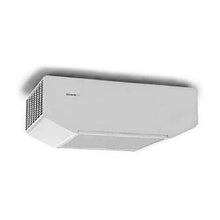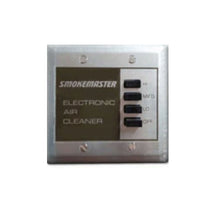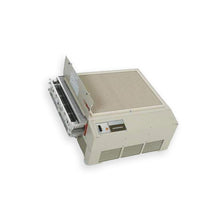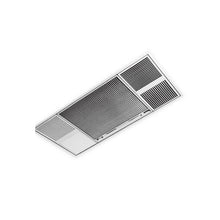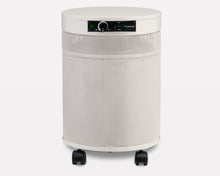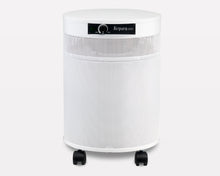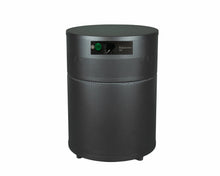Dispensary Odor Control: The Complete Guide to Managing Cannabis Odors and Protecting Your Business
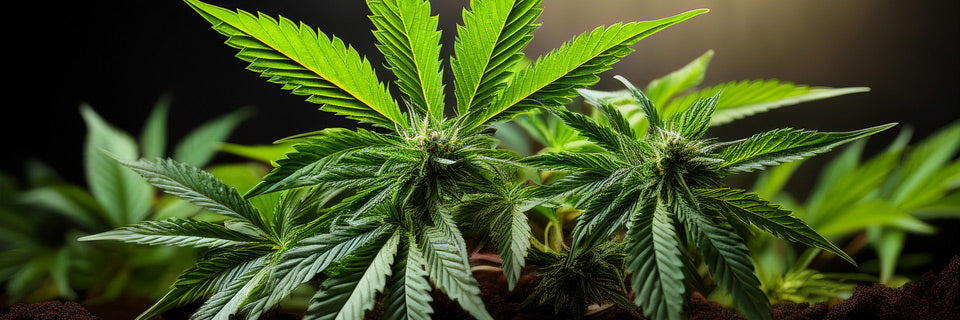
The unmistakable aroma of cannabis can be both your dispensary's signature and its biggest liability. While that distinctive scent might attract customers, it can also create serious problems with neighboring businesses, residential communities, and local authorities. Recent surveys show that odor complaints account for nearly 40% of all cannabis business violations reported to local licensing boards—making effective odor control not just a courtesy, but a critical business necessity.
Whether you're opening your first dispensary or struggling with ongoing odor management issues, understanding the difference between ventilation and purification could save your business from costly fines, community backlash, and potential license suspension. This comprehensive guide will walk you through proven strategies to maintain a welcoming environment for customers while being a responsible neighbor to your community.
The Hidden Costs of Poor Odor Control
Cannabis odor management isn't just about being polite to neighbors—it's about protecting your investment and ensuring long-term business viability. The consequences of inadequate odor control can be severe and far-reaching.
Regulatory and Legal Risks
Most cannabis licensing authorities include odor control requirements in their regulations. A 2024 study by the Cannabis Trade Federation found that businesses with odor violations were 3.2 times more likely to face additional regulatory scrutiny and 2.8 times more likely to receive unscheduled inspections. In Colorado, for example, dispensaries can face fines ranging from $1,000 to $10,000 for odor violations, with repeat offenses potentially leading to license suspension.
Community Relations and Business Reputation
Poor odor control can quickly turn your business into a community pariah. Social media amplifies neighbor complaints, and negative community sentiment can influence local zoning decisions, renewal processes, and customer perception. Research from the National Cannabis Industry Association shows that dispensaries with strong community relationships report 23% higher customer retention rates and face 60% fewer regulatory challenges.
Property and Lease Considerations
Many commercial landlords now include specific odor control clauses in cannabis business leases. Failure to manage odors can result in lease violations, increased insurance premiums, or even eviction. The cannabis real estate firm GreenSpace Properties reports that odor-related lease disputes have increased by 45% since 2022, making proactive odor management essential for maintaining favorable rental terms.
Understanding Cannabis Odor: The Science Behind the Scent
To effectively control cannabis odors, you need to understand what you're dealing with. Cannabis produces over 200 different volatile organic compounds (VOCs), with terpenes being the primary contributors to its distinctive smell.
The Chemistry of Cannabis Odor
Terpenes like myrcene, limonene, and pinene are released continuously from cannabis flowers, even when properly stored. These compounds are particularly challenging because they're designed by nature to be volatile—meaning they readily become airborne at room temperature. According to research published in the Journal of Cannabis Research, terpene concentrations can be 5-10 times higher in dispensary environments compared to typical retail spaces.
Why Traditional Air Fresheners Fail
Many dispensary owners make the mistake of trying to mask cannabis odors with air fresheners or scented products. This approach typically backfires, creating unpleasant mixed odors that are often more noticeable than the original cannabis scent. Worse, many commercial air fresheners contain chemicals that can interact with terpenes, potentially creating new odor compounds or health concerns for sensitive customers.
Factors That Amplify Odor Problems
Several environmental factors can make cannabis odors more problematic:
- Humidity levels above 60% can cause terpenes to linger longer in the air
- Poor air circulation allows odor compounds to accumulate in specific areas
- Temperature fluctuations can cause stored products to release more volatile compounds
- Packaging breaches during product handling create odor spikes throughout the day
Ventilation vs. Purification: Understanding the Critical Difference
One of the biggest misconceptions in cannabis odor management is confusing ventilation with purification. While both are important, they serve different purposes and address odor problems in fundamentally different ways.
Ventilation: Moving Air Around
Ventilation systems move air from one location to another. In dispensaries, this typically means exhausting indoor air to the outside while bringing in fresh outdoor air. While ventilation is essential for general air quality and comfort, it has significant limitations for odor control:
- Displacement, not elimination: Ventilation simply moves odorous air elsewhere, potentially creating problems for neighbors
- Weather dependency: Wind patterns and atmospheric conditions can cause exhausted odors to settle in unexpected areas
- Energy inefficiency: Constantly exhausting conditioned air and replacing it with outdoor air increases HVAC costs significantly
- Regulatory compliance issues: Many jurisdictions now restrict or prohibit direct exhaust of cannabis odors to outdoor air
Purification: Actually Cleaning the Air
Air purification systems remove or neutralize odor compounds from the air before it's recirculated or exhausted. This approach addresses the root cause of the problem rather than simply relocating it. Effective air purification offers several advantages:
- Odor elimination: Properly designed systems can remove 95-99% of cannabis odor compounds
- Regulatory compliance: Clean air exhaust helps meet increasingly strict odor control requirements
- Energy efficiency: Recirculating cleaned air reduces HVAC loads and operating costs
- Consistent performance: Unlike ventilation-only systems, purification works regardless of weather conditions
The Integrated Approach
The most effective dispensary odor control strategies combine both ventilation and purification. This typically involves:
- Negative pressure maintenance to prevent odors from escaping uncontrolled areas
- Strategic air purification at key odor generation points
- Controlled exhaust of purified air to minimize environmental impact
- Fresh air introduction balanced with energy efficiency considerations
Proven Odor Control Strategies for Dispensaries
Implementing effective odor control requires a systematic approach that addresses multiple sources and pathways. Here are the most successful strategies used by well-managed dispensaries:
Zone-Based Odor Management
Different areas of your dispensary generate different types and intensities of odors. A 2023 case study from California's Bureau of Cannabis Control found that dispensaries using zone-based approaches reduced odor complaints by 78% compared to those using generic whole-building solutions.
High-Priority Zones:
- Product storage areas: Where bulk inventory is kept
- Display cases: Where products are frequently opened for customer viewing
- Packaging and preparation areas: Where products are handled extensively
- Waste storage: Where plant material waste accumulates
Medium-Priority Zones:
- Customer areas: Where products are briefly exposed during transactions
- Reception areas: Where odors from other zones can accumulate
- Staff areas: Where employees may carry residual odors
Point-of-Source Control
The most cost-effective odor control happens at the source, before odors can spread throughout your facility. This includes:
- Airtight storage solutions: Investing in quality storage containers can reduce ambient odor levels by 60-80%
- Rapid containment protocols: Training staff to quickly reseal products after customer viewing
- Waste management systems: Installing dedicated air treatment for areas where cannabis waste is processed
- Product handling best practices: Minimizing the time products spend exposed to open air
Air Treatment Technology Selection
Not all air purification technologies are equally effective for cannabis odors. Research from the International Air Quality Association shows significant performance differences:
Most Effective Technologies:
- Activated carbon filtration: Removes 85-95% of terpenes and other VOCs
- UV-C photocatalytic oxidation: Breaks down odor molecules at the molecular level
- Multi-stage filtration systems: Combine multiple technologies for comprehensive odor removal
Less Effective Options:
- Ionization systems: Limited effectiveness against terpenes, potential ozone concerns
- Basic HEPA filtration: Effective for particles but doesn't address gaseous odors
- Ozone generators: Prohibited in many jurisdictions, potential health risks
Regulatory Compliance and Best Practices
Cannabis odor regulations vary significantly by jurisdiction, but several common themes are emerging as the industry matures. Understanding these requirements is crucial for long-term business success.
Emerging Regulatory Trends
Recent regulatory changes show increasing emphasis on quantifiable odor control. Massachusetts, for example, now requires dispensaries to demonstrate that odor levels at property boundaries don't exceed specific threshold values. Similarly, Nevada's updated regulations require regular air quality monitoring and documentation of odor control measures.
Documentation and Monitoring Requirements
Many jurisdictions now require dispensaries to maintain records of their odor control efforts. This typically includes:
- Regular air quality assessments conducted by qualified professionals
- Maintenance records for all air treatment equipment
- Complaint logs and response documentation
- Equipment performance data showing odor removal efficiency
Working with Local Authorities
Proactive engagement with local regulators and community members can prevent problems before they escalate. Successful dispensaries often:
- Invite regulatory inspections of their odor control systems during initial setup
- Participate in community meetings to address concerns before they become complaints
- Maintain open communication with neighboring businesses about any odor-related issues
- Regularly update their odor management plans based on operational experience
Implementation: Practical Steps for Immediate Improvement
If you're dealing with existing odor issues or want to prevent future problems, here's a prioritized action plan based on cost-effectiveness and impact:
Immediate Actions (Week 1-2)
- Audit your current storage practices: Identify any containers or areas where odors might be escaping
- Implement staff training: Ensure all employees understand proper product handling procedures
- Establish baseline measurements: Document current odor levels at various locations around your property
- Review your HVAC settings: Ensure you're maintaining appropriate negative pressure in high-odor areas
Short-term Improvements (Month 1-2)
- Upgrade storage containers: Invest in professional-grade airtight storage solutions
- Install point-of-source air treatment: Target the highest-impact areas first
- Develop standard operating procedures: Create written protocols for odor-generating activities
- Establish monitoring routines: Regular checks of equipment performance and odor levels
Long-term Solutions (Month 3-6)
- Implement comprehensive air purification: Install properly sized systems for your specific needs
- Integrate with building automation: Connect air treatment systems to your HVAC controls
- Establish community feedback mechanisms: Create channels for neighbors to communicate concerns directly
- Plan for expansion: Ensure your odor control systems can accommodate business growth
Solutions like commercial-grade air purification systems can provide the consistent, measurable results needed to meet these implementation goals while protecting your business investment.
Measuring Success: Key Performance Indicators
Effective odor management requires ongoing monitoring and adjustment. Successful dispensaries track several key metrics to ensure their systems are performing as expected.
Quantitative Measurements
- Air quality readings: Using calibrated instruments to measure VOC levels at property boundaries
- Complaint frequency: Tracking the number and nature of odor-related complaints over time
- Regulatory compliance scores: Monitoring inspection results and violation rates
- Energy efficiency metrics: Measuring the cost-effectiveness of your odor control investments
Qualitative Indicators
- Community relationships: Regular feedback from neighboring businesses and residents
- Customer comfort levels: Ensuring odor control doesn't negatively impact the customer experience
- Staff satisfaction: Maintaining a comfortable work environment for employees
- Regulatory relationships: Building positive working relationships with local authorities
Frequently Asked Questions
Q: How much should I budget for effective dispensary odor control? A: Investment varies based on facility size and local requirements, but most dispensaries spend 2-5% of their annual revenue on comprehensive odor management. The cost of prevention is typically 60-80% less than dealing with violations and community relations problems.
Q: Can I use the same odor control methods as other types of businesses? A: Cannabis odors require specialized approaches due to the unique properties of terpenes and other compounds. Generic commercial air freshening systems are typically inadequate and may actually make problems worse.
Q: How often should I replace or maintain my odor control equipment? A: Maintenance schedules depend on your specific equipment and usage patterns, but most systems require filter changes every 3-6 months and professional service annually. High-volume dispensaries may need more frequent attention.
Q: What should I do if I receive an odor complaint? A: Respond immediately by investigating the source, documenting your findings, and taking corrective action. Contact the complainant within 24 hours to acknowledge their concern and explain your response. Most problems can be resolved quickly with proactive communication.
Q: Are there any odor control methods I should avoid? A: Avoid ozone generators (often prohibited), masking agents that don't eliminate odors, and any systems that haven't been specifically tested for cannabis applications. Always verify that your chosen methods comply with local regulations.
Effective odor control is one of the most important investments you can make in your dispensary's long-term success. By understanding the science behind cannabis odors, implementing proven control strategies, and maintaining proactive community relationships, you can protect your business while being a responsible member of your community.
The key is taking action before problems develop. Whether you're planning a new dispensary or addressing existing challenges, the strategies outlined in this guide provide a roadmap for creating an effective, compliant, and community-friendly operation. Remember that odor control technology continues to evolve, so staying informed about new solutions and regulatory requirements will help ensure your continued success in this dynamic industry.
For more information about commercial air purification solutions specifically designed for cannabis businesses, explore our comprehensive product guides and case studies that demonstrate real-world results from dispensaries across the country.

